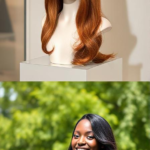Ever had that moment when you catch your reflection and your wig is practically screaming “I’M A WIG!” to everyone who passes by? We’ve all been there! Nothing ruins confidence faster than a wig that looks about as natural as a plastic palm tree. But don’t worry – fixing an unnatural-looking wig isn’t rocket science. With a few insider tricks, you’ll have people wondering if you were born with that gorgeous hair!
Why Your Wig Looks Unnatural – and How to Fix It
Have you ever invested in what seemed like the perfect wig, only to put it on and feel like you’re wearing a costume? You’re not alone. Many wig wearers struggle with making their units look like they grew naturally from their scalp. Whether you’re new to wigs or a seasoned wearer looking to level up, this guide will transform your wig game from obviously fake to convincingly fabulous.
The Telltale Signs of an Unnatural Wig
Before diving into solutions, let’s identify what makes a wig look fake in the first place. Recognizing these issues is half the battle!
- Too Much Shine
That plastic-like sheen is the number one giveaway of synthetic wigs. When your hair reflects light like a disco ball, people notice—and not in a good way. Natural hair has varied light reflection patterns, while untreated synthetic fibers often have a uniform, excessive shine.
- Unrealistic Hairline
A perfect, dense hairline screams “wig” from a mile away. Human hairlines are naturally irregular, with baby hairs and slight variation in density. If your wig starts with a harsh, straight line across your forehead, it’s an immediate red flag.
- Wrong Density
Many wigs come with too much hair packed into the cap. While it might seem like more hair equals better value, the reality is that overly dense wigs look bulky and unnatural. Human hair naturally has varying density, with some areas appearing slightly thinner than others.
- Incorrect Color Match
A wig that doesn’t match your skin tone, eyebrows, or natural coloring can look jarring and obviously fake. The wrong shade can wash you out or create a stark contrast that draws unwanted attention.
- Stiff Movement
Natural hair flows, bounces, and moves with you. If your wig stays perfectly in place regardless of movement or weather, it looks artificial. This issue is particularly common with lower-quality synthetic wigs.
- Cap Visibility
When the wig cap peeks through, especially around the part or edges, it immediately destroys any illusion of natural hair. This happens with thin wigs or improper installation.
- Improper Placement
A wig sitting too far forward, back, or at an odd angle on your head will never look natural, no matter how high-quality the hair is.
Choosing the Right Wig: Foundation of Natural Appearance
The journey to a natural-looking wig begins before you even make a purchase. Let’s explore how to select a wig that has the best chance of looking like your real hair.
Human Hair vs. Synthetic: Making the Right Choice
Human hair wigs typically offer the most natural appearance but come with a higher price tag and maintenance requirements. Modern high-quality synthetic wigs can look surprisingly natural while being more affordable and lower maintenance.
When choosing between human and synthetic hair, consider:
- Your budget: Human hair wigs generally cost $200-$5000+, while synthetic options range from $30-$500
- Styling needs: If you love changing styles frequently, human hair allows heat styling
- Maintenance time: Human hair requires washing, conditioning, and styling like natural hair
- Longevity: Human hair wigs last 1-3 years with proper care, while synthetic wigs typically last 4-6 months with regular wear
For beginners, a high-quality synthetic wig might be the best starting point. Once you’re comfortable with wig wearing and care, you can invest in human hair if desired.
Selecting the Right Construction
Wig construction dramatically impacts how natural a wig looks. Here are the main options:
- Lace Front Wigs: These have a sheer lace panel at the front hairline that can be customized to match your skin tone. They create the illusion of hair growing from your scalp at the hairline but may have wefts in the back.
- Full Lace Wigs: These have lace covering the entire cap, allowing for versatile styling, including updos. They’re the most natural-looking but also the most expensive.
- 360 Lace Wigs: These feature lace around the entire perimeter, offering styling flexibility while being more affordable than full lace wigs.
Basic Cap Wigs: These have a solid cap with wefted hair and typically look the least natural but are the most budget-friendly. For a natural look, invest in at least a lace front wig if your budget allows.
Choosing the Right Density
Contrary to popular belief, more hair doesn’t equal a better wig. Natural hair has varying density, and extremely thick wigs often look fake.
- Low density (90-120%): Appears most natural for thin or fine hair types
- Medium density (130-150%): Works for most people and offers a natural look
- High density (160-200%): Can look unnatural unless you naturally have very thick hair
When in doubt, choose medium density. You can always add more hair with extensions if needed, but you can’t easily reduce an overly dense wig.
Customizing Your Wig for a Natural Look
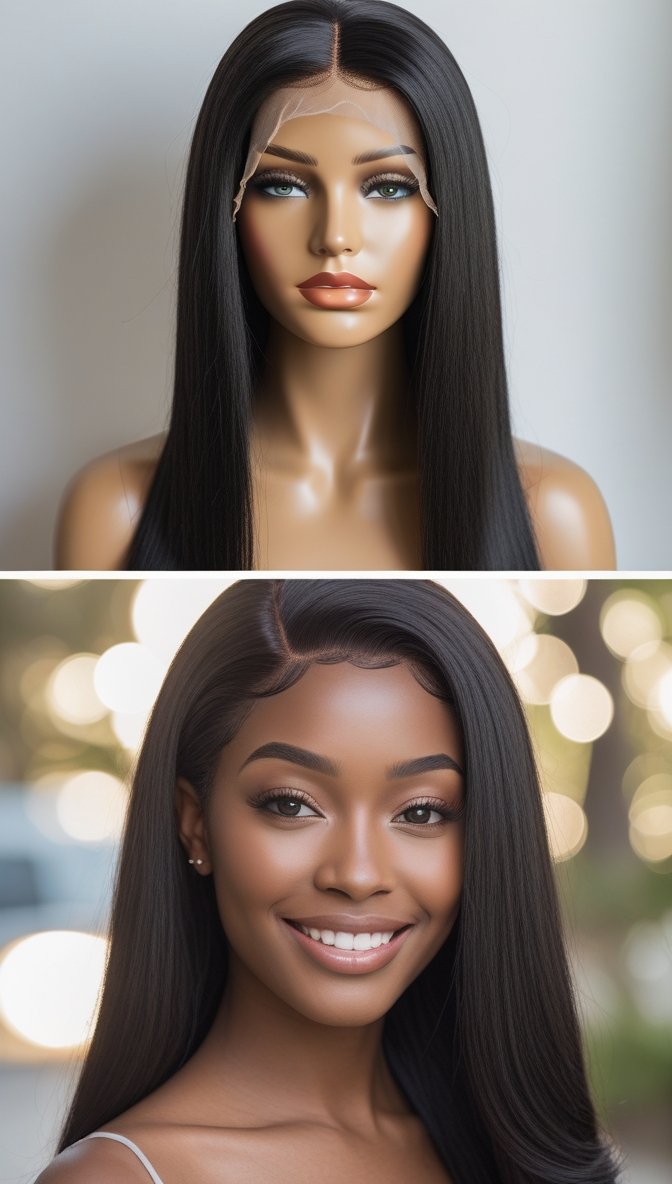
Even the best wig straight out of the box rarely looks completely natural. Customization is key.
Plucking the Hairline and Part
One of the most critical steps for a natural-looking wig is plucking the hairline and part to create realistic hair density.
To pluck your wig effectively:
- Place the wig on a canvas or styrofoam head
- Use sharp tweezers to gently remove individual hairs
- Focus on creating a gradually increasing density from the very front
- Create small, random variations rather than a uniform pattern
- Pluck the part line to widen it slightly (about 1/8 inch wide is typically natural)
- Step back frequently to check your progress
Be patient and remember it’s better to pluck too little than too much—you can always remove more hair, but you can’t put it back!
Baby Hair Creation and Styling
Natural hairlines include fine, shorter hairs around the perimeter. Creating baby hairs can dramatically increase how natural your wig appears.
To create baby hairs:
- Identify a small section of hair around the perimeter of your wig
- Cut these hairs shorter (about 1/2 to 1 inch long) using small scissors
- Use a clean toothbrush and light gel to style these hairs
- Create subtle, wispy patterns rather than dramatic swirls
- Use minimal product to avoid a stiff, pasted-on look
Bleaching the Knots
Dark knots on lace can make it obvious you’re wearing a wig. Bleaching the knots lightens the tiny dots where the hair is tied to the lace, creating the illusion of hair growing from the scalp.
Note: This process involves chemicals and can damage the wig if done incorrectly. Consider having a professional do this, or research thoroughly before attempting it yourself.
Basic knot bleaching process:
- Mix bleach powder and developer (20 volume)
- Apply to the underside of the lace only
- Monitor carefully and rinse thoroughly after 5-10 minutes
- Neutralize with a purple-based shampoo
- Condition the hair thoroughly afterward
Cutting and Styling for Face-Framing
Having your wig cut and styled to complement your face shape makes an enormous difference in how natural it appears.
Consider:
- Adding layers to create movement
- Creating face-framing pieces
- Thinning out bulky areas with texturizing shears
- Adding a side-swept bang or layers around the face
While you can attempt this yourself, investing in a professional cut by a stylist experienced with wigs is often worth the cost.
Proper Installation Techniques

Even the most perfect wig will look fake if installed incorrectly. Let’s explore how to put your wig on for maximum realism.
Preparing Your Natural Hair
Before putting on your wig:
- Wash and condition your natural hair
- Braid or twist your hair in flat cornrows or twists
- Use a wig cap that matches your skin tone or the base of your wig
- Ensure all your natural hair is tucked away with no bumps
For those with very short hair, a wig grip or stocking cap might be sufficient without braiding.
Securing Without Bulkiness
There are several ways to secure your wig:
- Wig grip bands: Velvet bands that create friction to hold the wig in place
- Adhesives: Glues and tapes designed specifically for wigs
- Clips and combs: Built into many wigs, though they may cause damage with long-term use
- Sewing: Temporarily sewing the wig to braided hair underneath
The key is finding a method that keeps your wig secure without creating bulk or visible lines.
Blending with Your Skin
The area where your wig meets your skin should be seamless. To achieve this:
- Choose a lace color that matches your skin tone
- Use a foundation or tinted powder that matches your skin to blend the lace
- Apply the makeup with a small brush or makeup sponge using patting motions
- Set with translucent powder for longevity
- For adhesive applications, apply foundation after the adhesive has dried completely
Making Synthetic Wigs Look More Natural

Synthetic wigs present unique challenges but can look surprisingly natural with the right techniques.
Reducing the Shine
That plastic shine is the biggest giveaway with synthetic wigs. To reduce it:
- Wash with fabric softener: Dilute fabric softener with water, soak the wig for 5 minutes, rinse thoroughly
- Dry shampoo application: Spray throughout the wig and gently brush through
- Baking soda rinse: Mix 1 tablespoon of baking soda with water and rinse the wig
- Commercial shine-reducing products: These are specifically designed for synthetic hair
Creating Movement and Texture
To make synthetic hair move more naturally:
- Use a wide-tooth comb instead of a brush
- Apply synthetic-safe styling products designed to add movement
- For heat-resistant synthetic wigs, use low heat to add gentle waves
- Consider steaming rather than traditional heat styling
- Gently “shake out” the wig before wearing to loosen the fibers
Strategic Styling for Realism
The way you style a synthetic wig can significantly impact how natural it appears:
- Avoid perfectly symmetrical styles
- Add a slight off-center part rather than a perfectly centered one
- Pull a few strands loose around the face
- Consider a messy bun or textured style that’s expected to look less “perfect“
- For longer wigs, try half-up styles that create dimension
Human Hair Wig Maintenance for Natural Appearance
Human hair wigs require proper maintenance to continue looking natural.
Washing and Conditioning Routines
Just like natural hair, human hair wigs need regular cleaning:
- Wash every 7-10 wears or when product buildup occurs
- Use sulfate-free, gentle shampoos and conditioners
- Wash in cool to lukewarm water (never hot)
- Apply conditioner from mid-lengths to ends, avoiding the roots/knots
- Rinse thoroughly to prevent product buildup
- Air dry whenever possible to minimize damage
Heat Styling Best Practices
Heat styling can damage human hair wigs just like natural hair:
- Always use heat protectant before styling
- Keep heat tools below 350°F (180°C)
- Style in small sections
- Don’t heat style more than necessary
- Consider heatless styling methods when possible
Nighttime Care for Longevity
How you store your wig overnight impacts its appearance:
- Never sleep in your wig
- Place on a wig stand to maintain its shape
- Consider a silk or satin storage bag to prevent frizz
- Braid or loosely twist longer wigs before storage
- Keep away from direct sunlight and heat sources
Common Mistakes That Make Wigs Look Fake
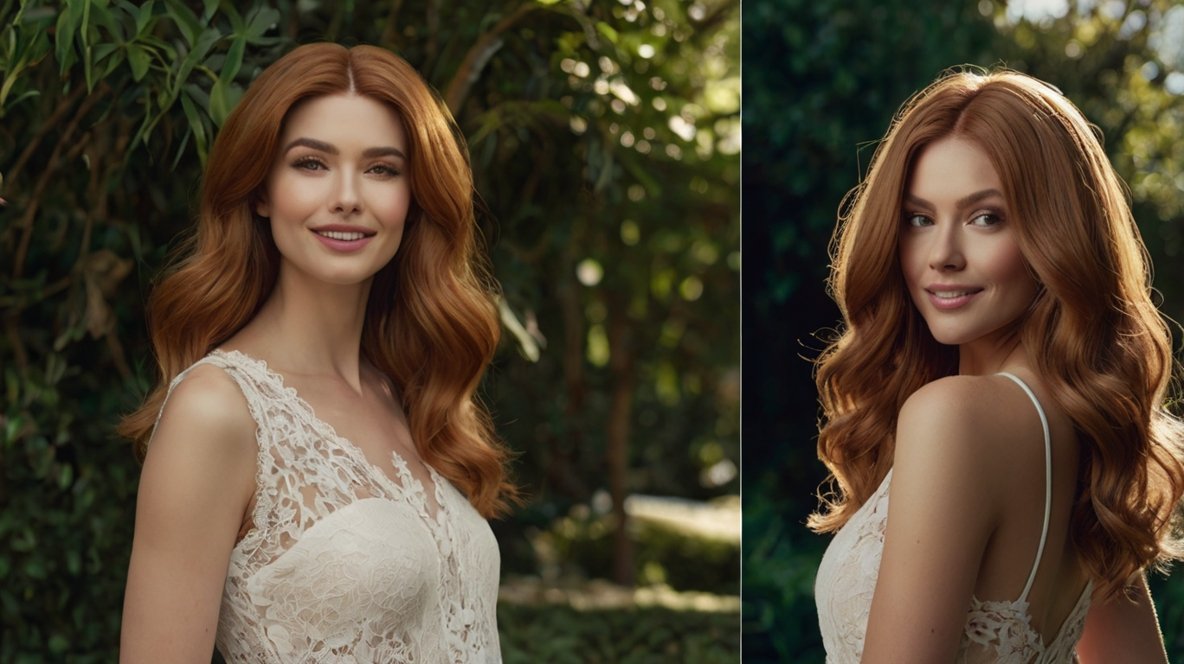
Avoid these pitfalls that instantly reveal you’re wearing a wig:
Ignoring Your Natural Features
A wig that doesn’t complement your:
- Skin tone
- Face shape
- Age
- Personal style
- Natural hairline shape
Will always look less authentic than one that does. Choose wigs that could believably be your natural hair.
Improper Part Placement
Parts that are:
- Too narrow
- Too straight
- In an unnatural position for your face shape
Look immediately fake. Study natural hair parts and mimic their slight irregularities.
Neglecting the Edges
Harsh, uniform edges are a major wig giveaway. Always pay special attention to:
- Softening the hairline
- Creating realistic baby hairs
- Ensuring the nape area looks natural
- Blending sideburns realistically
Unrealistic Length or Volume for Your Frame
Extremely long or voluminous wigs on petite frames often look costume-like. Consider your body proportions when selecting length and volume.
Professional Services Worth the Investment
Sometimes, professional help makes all the difference.
Custom Coloring
Professional colorists can:
- Create dimensional color with highlights and lowlights
- Add shadow roots for realism
- Tone the hair to complement your skin
- Fix box-dye mistakes or manufacturer colors that don’t work
Professional Cutting and Styling
A wig-experienced stylist can:
- Create a cut that flatters your face shape
- Add appropriate layers for movement
- Thin out overly dense areas
- Style in a way that maximizes natural appearance
Custom Wig Creation
For those with the budget, custom wigs offer unparalleled natural appearance:
- Made to your exact head measurements
- Customized hairline to match your natural one
- Density and color matched to your preferences
- Hand-tied for the most realistic movement
Budget-Friendly Tips for Natural-Looking Wigs

You don’t need to break the bank for a natural-looking wig.
Strategic Accessorizing
Accessories can distract from less natural elements:
- Headbands cover the hairline
- Hats hide the top and front
- Scarves can disguise wig edges
- Hair clips add personal style while securing problematic areas
Mixing with Your Natural Hair
If you have some natural hair, consider:
- Leave-out methods where your natural hairline shows
- Half-wigs that blend with your own hair
- Toppers that add volume while your natural hair shows around the perimeter
DIY Customization on a Budget
Without spending much, you can:
- Use concealer you already own to blend lace
- Create baby hairs with existing edge control products
- Reduce shine with household items like dryer sheets
- Use diluted fabric softener to soften synthetic fibers
Confidence: The Secret Ingredient
The most natural-looking wig in the world won’t work if you’re constantly adjusting it or drawing attention to it.
Wearing Your Wig with Assurance
When you wear a wig:
- Avoid touching or adjusting it in public
- Practice wearing it at home until it feels natural
- Remember that most people are not scrutinizing your hair
- Have responses ready if someone compliments your “hair”
Embracing Your Wig Journey
Remember that:
- Everyone starts somewhere
- Skills improve with practice
- What looks natural varies by person and context
- Your comfort matters more than others’ opinions
Conclusion
Achieving a natural-looking wig is both an art and a science. By selecting the right wig, customizing it thoughtfully, installing it properly, and maintaining it correctly, you can create a look that’s indistinguishable from natural hair.
Remember that small details make the biggest difference—a properly plucked hairline, well-blended lace, and movement-friendly styling can transform an obvious wig into a natural-looking crown of glory. Whether you wear wigs for fashion, convenience, or necessity, these techniques will help you wear them with confidence and style.
Most importantly, practice makes perfect. Don’t be discouraged if your first attempts don’t achieve the exact look you want. Each time you work with your wigs, you’ll develop new skills and discover techniques that work for your unique features and preferences.
Frequently Asked Questions
1. How often should I wash my human hair wig to keep it looking natural?
Human hair wigs should typically be washed every 7-10 wears, or when product buildup becomes noticeable. Overwashing can lead to dryness and tangling, while underwashing allows oils and products to accumulate, weighing the hair down and making it look less natural. Always use products specifically designed for wigs or gentle, sulfate-free formulas.
2. Can I swim or shower in my wig?
Swimming in chlorinated pools or salt water is not recommended for either human hair or synthetic wigs, as these environments can cause damage to the hair fibers and construction. Similarly, showering in your wig is generally not advised, as the water pressure and heat can affect the wig’s appearance and longevity. If you need water-friendly hair options, consider specialized swim caps or water-resistant partial pieces designed for this purpose.
3. How do I keep my lace front from lifting in hot or humid weather?
In hot or humid conditions, traditional adhesives can begin to break down, causing lace fronts to lift. For better staying power, consider using an alcohol-based adhesive specifically formulated for heat resistance. Apply a scalp protector before the adhesive, and set the dried adhesive with a translucent powder. You may also want to carry wig-safe adhesive strips for emergency touch-ups and minimize exposure to direct heat and excessive sweating when possible.
4. Why does my wig tangle so much, and how can I prevent it?
Excessive tangling usually stems from dryness, friction, or product buildup. For synthetic wigs, use a synthetic-specific leave-in conditioner to reduce static and friction. For human hair wigs, regular conditioning treatments help maintain moisture balance. In both cases, sleeping with your wig on or rubbing against high-friction materials (like cotton pillowcases) increases tangling. Store your wig properly on a stand when not in use, and consider a silk or satin storage bag to minimize friction-based tangles.
5. How can I make an inexpensive wig look more high-end?
To elevate a budget-friendly wig, focus on customizing the hairline by plucking for realistic density and adding baby hairs. Reduce synthetic shine with dry shampoo or a fabric softener rinse. Have the wig cut to flatter your face shape, even if it’s just trimming the length or adding face-framing layers. Adding a root shadow with temporary root spray can create dimension, and strategic styling (like half-up styles or braids) can conceal less natural-looking areas while adding personal flair.


